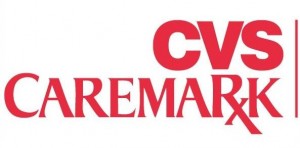 The U.S. health system could conserve $170 billion in avoidable medical costs related to patients not taking prescription drugs as-prescribed. That’s known as “sub-optimal pharmacy care,” and it’s estimated that 3 in 4 prescription drug users fall into this category. In other words, only 1 in 4 patients on Rx drugs take their prescriptions as directed by their physicians (known as compliance) or weren’t prescribed the optima drug therapy in the first place. At least 1 in 4 patients never even fill their first prescription for a drug their physician has prescribed.
The U.S. health system could conserve $170 billion in avoidable medical costs related to patients not taking prescription drugs as-prescribed. That’s known as “sub-optimal pharmacy care,” and it’s estimated that 3 in 4 prescription drug users fall into this category. In other words, only 1 in 4 patients on Rx drugs take their prescriptions as directed by their physicians (known as compliance) or weren’t prescribed the optima drug therapy in the first place. At least 1 in 4 patients never even fill their first prescription for a drug their physician has prescribed.
CVS Caremark has found that health citizens can become more compliant with prescription drug regimens when given an “active voice” along with useful tools and messaging via channels people want to use for personalized support. The four channels include:
- Interactive Web sign-ins
- Customer calls to care centers
- Automated outbound telephone calls to consumers
- Direct mail.
In describing the challenge of non-compliance, CVS Caremark talks about getting 2 things “right:” (1) getting the medicine right, and (2) getting the patients’ behavior right. The former involves leveraging evidence-based medicine and clinical intelligence, personalizing Rx drug therapy to the individual. The second part deals with designing prescription drug benefit plans that understand consumer behaviors relatively to co-pay tiers, communicating where the patient-consumer wants “is” (thus, via many touchpoints), and delivering highly-personalized, clear, transparent communications to the consumer.
The company convened the Behavior Change Research Partnership (BCRP) in spring 2010 to learned more about how to nudge patients toward better Rx compliance. The BCRP is comprised of 3 key disciplines which, together, inform the research in an integrative way: the trifecta combines behavioral economics (represented by George Loewenstein, Carnegie Mellon University); health economics (led by Kevin Volpp, University of Pennsylvania’s Medical School and The Wharton School of Business); and, psychology and social marketing (driven by Punam Anand Keller of the Tuck School of Business, Dartmouth College).
The team’s findings were presented to the Pittsburgh Business Group on Health on September 9, 2010.
Health Populi’s Hot Points: BCRP has connected the dots between consumers’ “active voice” and their likelihood of filling prescriptions. When given that active voice, the number of health consumers’ filled prescriptions more than doubled. This is an example of how consumer health engagement drives positive behaviors and, thereby, health outcomes.
Medication compliance is such a tough nut to crack because it’s a personal, individual, 1:1 challenge: every health citizen has her own approach to “project managing” their health. Some of us don’t like the idea of taking any pills, whatsoever, even when newly-diagnosed with a chronic condition like diabetes or high blood pressure. Some people don’t have time to stop at the pharmacy and pick up their meds. Other folks are splitting medications to save money, or make them last longer. So for health consumers, taking medicine can be about convenience, quality, or cost, in some order unique to their sensibilities, home economics and health-belief system.
Furthermore, people prefer receiving health information in different ways, via different channels: mail, e-mail, text messaging, via phone interactive-voice-response (IVR), through a telephone call center, through an in-bound automated message, or talking with a personal physician (whether real-time or after office hours).
CVS Caremark and the BCRP recognize the complexity and multi-factorial nature of the medication compliance and adherence challenge. It’s early days for the team and the research, but the early findings are intriguing. BCRP is getting the compliance recipe right with its integration of health economics, behavioral economics, and social psychology.




 I am so grateful to Tom Lawry for asking me to pen the foreword for his book, Health Care Nation,
I am so grateful to Tom Lawry for asking me to pen the foreword for his book, Health Care Nation,  I love sharing perspectives on what's shaping the future of health care, and appreciate the opportunity to be collaborating once again with Duke Corporate Education and a global client on 6th May. We'll be addressing some key pillars to consider in scenario planning such as growing consumerism in health care, technology (from AI to telehealth), climate change, and trust -- the key enabler for health engagement or dis-engagement and mis-information. I'm grateful to be affiliated with the corporate education provider
I love sharing perspectives on what's shaping the future of health care, and appreciate the opportunity to be collaborating once again with Duke Corporate Education and a global client on 6th May. We'll be addressing some key pillars to consider in scenario planning such as growing consumerism in health care, technology (from AI to telehealth), climate change, and trust -- the key enabler for health engagement or dis-engagement and mis-information. I'm grateful to be affiliated with the corporate education provider  Thank you FeedSpot for
Thank you FeedSpot for